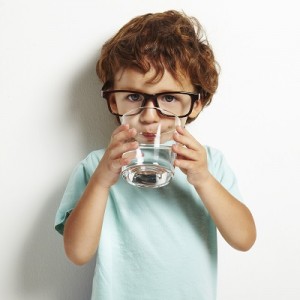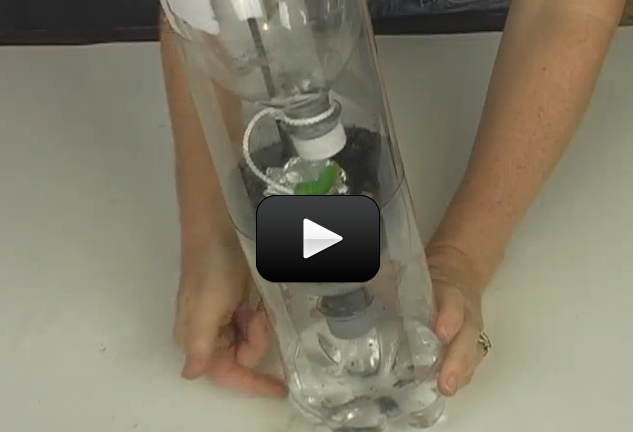 When birds and animals drink from lakes, rivers, and ponds, how pure it is? Are they really getting the water they need, or are they getting something else with the water?
When birds and animals drink from lakes, rivers, and ponds, how pure it is? Are they really getting the water they need, or are they getting something else with the water?
This is a great experiment to see how water moves through natural systems. We’ll explore how water and the atmosphere are both polluted and purified, and we’ll investigate how plants and soil help with both of these. We’ll be taking advantage of capillary action by using a wick to move the water from the lower aquarium chamber into the upper soil chamber, where it will both evaporate and transpire (evaporate from the leaves of plants) and rise until it hits a cold front and condenses into rain, which falls into your collection bucket for further analysis.
Sound complicated? It really isn’t, and the best part is that it not only uses parts from your recycling bin but also takes ten minutes to make.
[am4show have=’p8;p9;p28;p55;p65;p86;p87;’ guest_error=’Guest error message’ user_error=’User error message’ ]
Here’s what you need:
- three 2-liter soda bottles, empty and clean
- razor with adult help
- scissors
- tape
- ruler
- 60 cm heavy cotton string
- soil
- water
- ice
- plants
- drill and drill bits
- fast-growing plant seeds (radish, grass, turnips, Chinese cabbage, moss, etc.)
Here’s what you do:
Download Student Worksheet & Exercises
Make sure your wicks are thoroughly soaked before adding the soil and plants! You can either add ice cubes to the top chamber or fill it carefully with water and freeze the whole thing solid. If you’re growing plants from seeds, leave the top chamber off until they have sprouted.
You can add a strip of pH paper both inside and outside your soil chamber to test the difference in pH as you introduce different conditions. You can check out the Chemical Matrix Experiment and the Acid-Base Experiment also!) What happens if you light a match, blow it out, and then drop it in the soil chamber? (Hint – you’ve just made acid rain!)
Do you think salt travels with the water? What if you add salt to the aquarium chamber? Will it rain salty water? You can place a bit of moss in the collection bucket to indicate how pure the water is (don’t drink it – that’s never a good idea).
Exercises
- Do you think salt travels with the water?
- What if you add salt to the aquarium chamber? Will it rain salty water?
- What happens if you light a match, blow it out, and then drop it in the soil chamber? (Hint – you’ve just made acid rain!)
[/am4show]


Yes potting soil will work also!
Hi. Can we can use the potting soil (has fertilizer in it) with this experiment or does it need to be a different kind? Thanks!
I will have my team connect with you right away!
If the issue is for access grade 9-12 and we only have signed up K-8 can she get the 9-12 also? I am trying to see what I can do with an 8 yrs kid and there should be no stop (how far can they go, right?). Please advice.
Hi Terri! Thanks so much for your eagle eye – and yes if you see any typos please let me know right away so we can fix them. We have an editor working on the downloadable lesson plans right now, so I appreciate your help with the website errors that we have missed!
Aurora – Would like a second/third pair of eyes to proof read? Spell-check only goes so far. I’m willing to help.
“..water THE/they need, or are they getting something else with the water?
This is a great experiment to see how water moves through natural systems. We’ll explore how water and the atmosphere are both polluted and purified, and we’ll investigate how PLANS/plants and soil …”